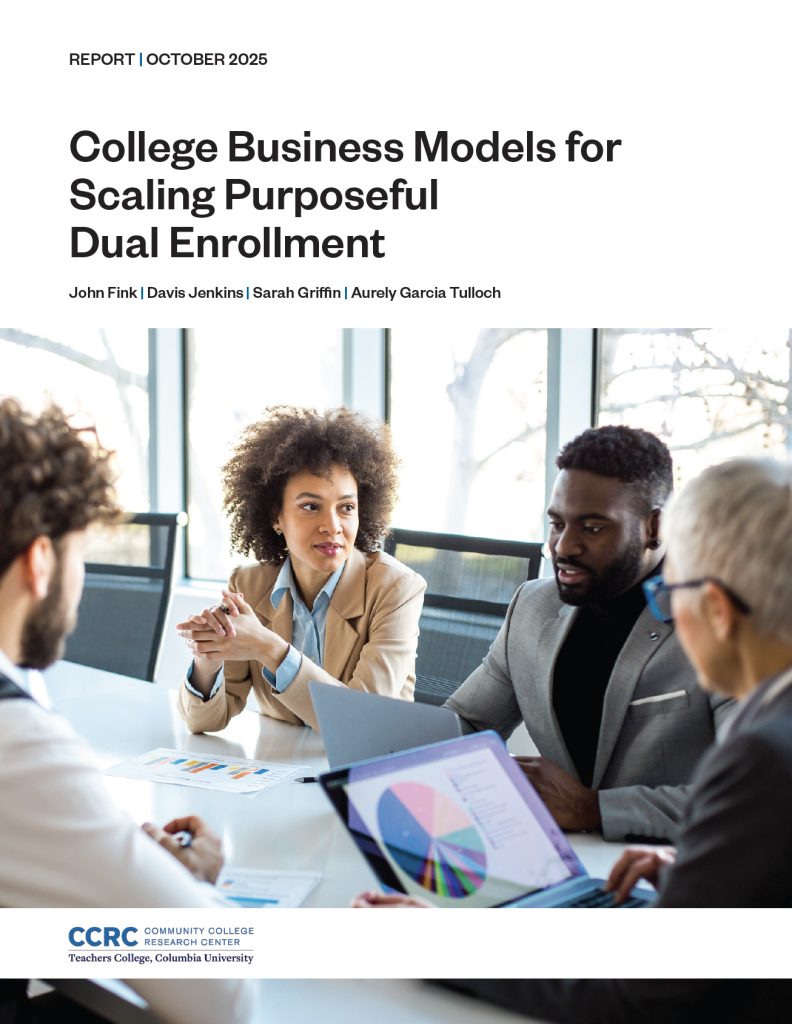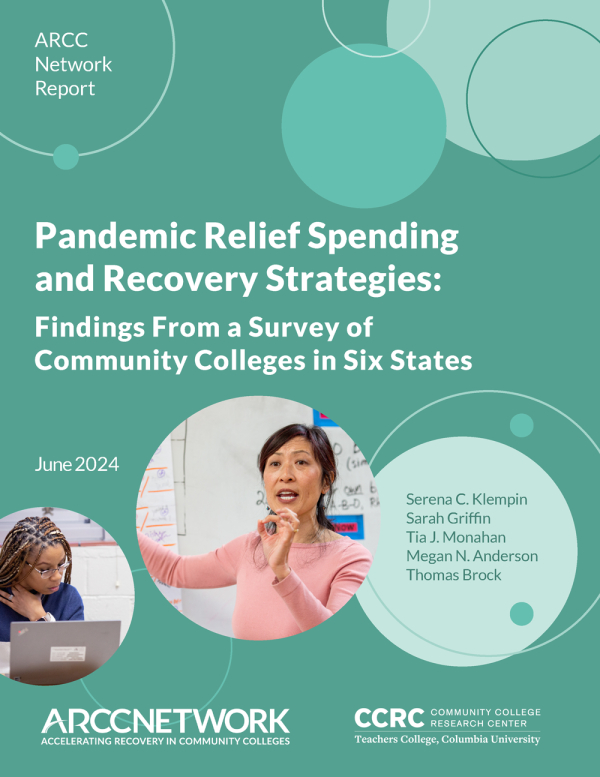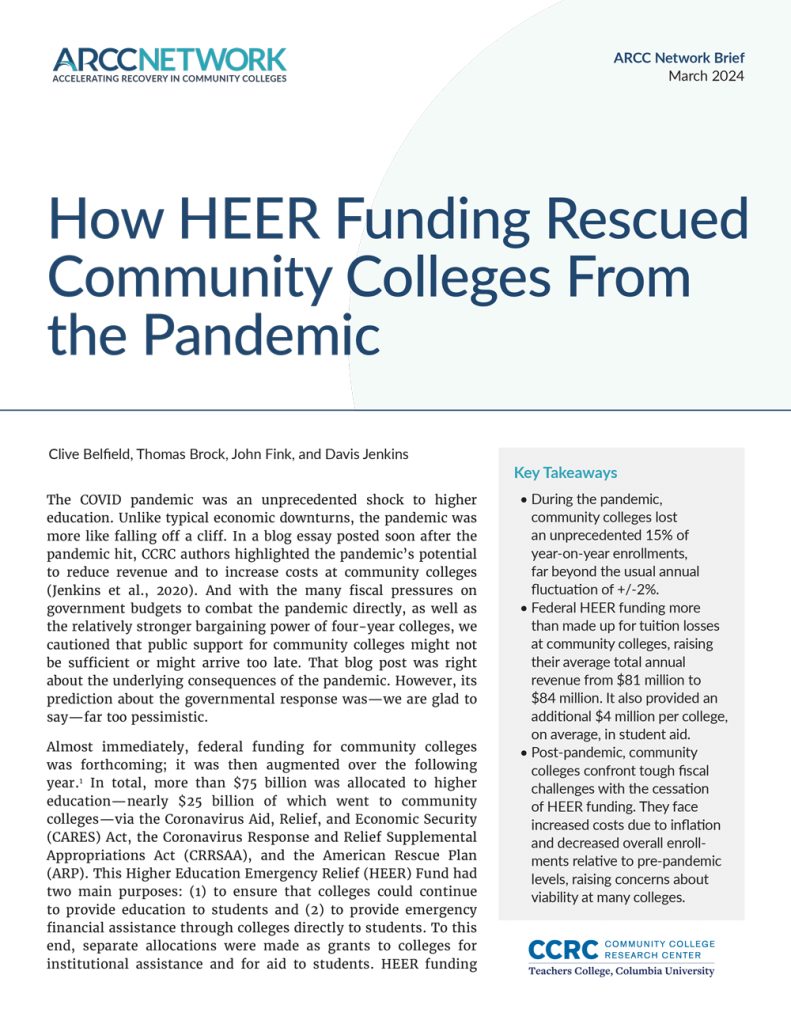College Business Models for Scaling Purposeful Dual Enrollment

This report describes strategies for providing purposeful dual enrollment, which better guides underserved students into degree- and career-connected education after high school, without shifting the cost burden onto students and families.
Comparative Cost Analyses of Community College Student Success Initiatives

This paper documents the annual costs associated with six common community college success strategies; overall costs, the distribution of costs, and costs per student, as well as how costs are borne by various actors are identified.
Pandemic Relief Spending and Recovery Strategies: Findings From a Survey of Community Colleges in Six States

This book chapter explores the personal support networks and help-seeking preferences of immigrant-origin, first-generation-in-college students (FGCS) as part of a three-year longitudinal mixed-methods study with FGCSs at four public Hispanic-serving institutions in California.
How HEER Funding Rescued Community Colleges From the Pandemic

Using financial data from IPEDS, this ARCC Network brief examines what happened to community college revenue and student aid during the pandemic and assesses the importance of Higher Education Emergency Relief (HEER) funding for community colleges and their students.
An Analysis of Federal Pandemic Relief Funding at Community Colleges

This ARCC Network report examines how Higher Education Emergency Relief (HEER) funds were distributed to community colleges and the extent to which the colleges spent those funds. It also explores how HEER funding and spending patterns differed by institutional and student characteristics.
